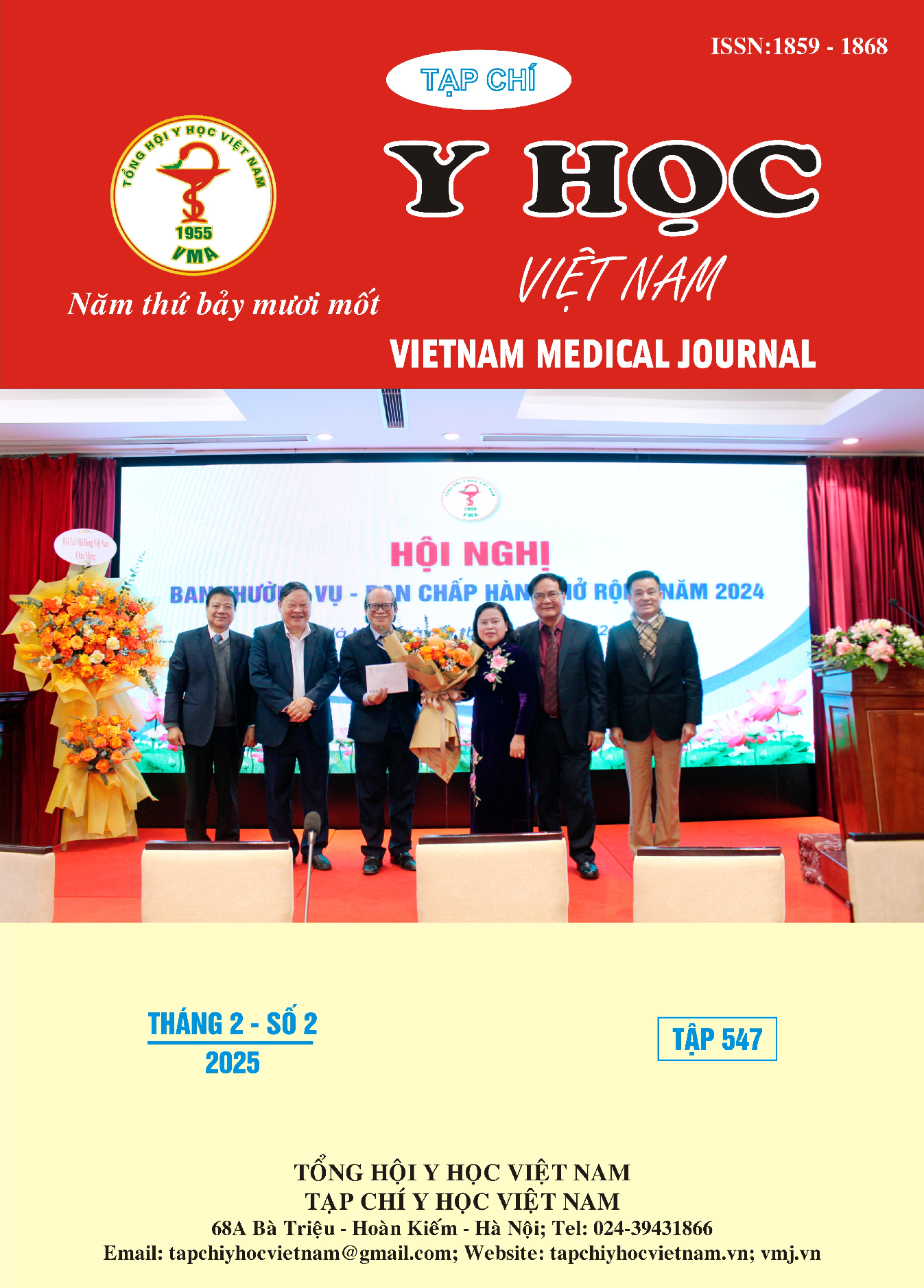COMPARING OUTCOMES OF THROMBECTOMY IN THE 6-16-HOUR AND 16-24-HOUR WINDOWS FOR PATIENTS WITH ACUTE ISCHEMIC STROKE DUE TO LARGE VESSEL OCCLUSION
Main Article Content
Abstract
Introduction: Endovascular thrombectomy (EVT) has been proven to be an effective treatment for acute ischemic stroke caused by large vessel occlusion within the extended treatment window of 6–24 hours, according to findings from the DEFUSE-3 (up to 16 hours) and DAWN (up to 24 hours) trials. However, data on EVT within the 16–24 hour treatment window remains limited, with a Class IIA recommendation. Our study evaluates the efficacy and safety of EVT in patients with acute ischemic stroke within the 16–24 hour window, compared to those treated within the 6–16-hour window. Methods: A prospective cohort study was conducted on 200 patients from August 2022 to September 2024 at People’s Hospital 115. Patients diagnosed with acute ischemic stroke due to large vessel occlusion in the anterior circulation within the 6–24 hour window underwent endovascular thrombectomy based on perfusion imaging criteria (Perfusion-RAPID, iSchemaView). Baseline characteristics and clinical outcomes will be compared between the group treated within the 6–16 hour window and the >16–24 hour window. Results: Among 200 patients, 103 were treated within the 6–16 hour window, and 97 within the 16–24 hour window. The median age of the patients was 66 (59–75), the median pre-intervention NIHSS score was 12 (8.5–17.0), and the median infarct core volume was 11 (3–24) ml. Regarding safety and efficacy, the study found no significant differences between the two groups in the following criteria: Successful reperfusion rate (TICI 2b–3: 88.3% vs. 81.4%; p = 0.242), proportion of patients achieving mRS 0–2 at 90 days (44.7% vs. 47.4%; p = 0.915), rate of symptomatic intracranial hemorrhage (1.0% vs. 4.1%; p = 0.330), mortality rate (mRS 6) at 90 days (12.6% vs. 11.3%; p = 0.915). Conclusion: Thrombectomy within the window 16-24 hours remains as effective and safe as interventions within the window 6-16 hours, expanding treatment opportunities for large vessel occlusion stroke patients.
Article Details
Keywords
Acute ischemic stroke, large vessel occlusion, thrombectomy, 6–24 hour window.
References
2. Nogueira RG, Jadhav AP, Haussen DC, et al. Thrombectomy 6 to 24 hours after stroke with a mismatch between deficit and infarct. 2018;378:11-21.
3. Motyer R, Thornton J, Power S, et al. Endovascular thrombectomy beyond 12 hours of stroke onset: a stroke network's experience of late intervention. Journal of neurointerventional surgery 2018;10:1043-6.
4. Tsurukiri J, Ota T, Jimbo H, et al. Thrombectomy for Stroke at 6-24 hours without Perfusion CT Software for Patient Selection. Journal of stroke and cerebrovascular diseases : the official journal of National Stroke Association 2019;28:774-81.
5. Alsahli K, Cheung AK, Wijesuriya N, et al. Thrombectomy in stroke of unknown onset, wake up stroke and late presentations: Australian experience from 2 comprehensive stroke centres. Journal of clinical neuroscience: official journal of the Neurosurgical Society of Australasia 2019;59:136-40.
6. Trần Thị Minh Hằng NHT. Kết quả điều trị can thiệp lấy huyết khối bằng dụng cụ cơ học trên bệnh nhân nhồi máu não cấp trong cửa sổ từ 6 đến 24 giờ. TP. Hồ Chí Minh: Đại học Y dược TP. Hồ Chí Minh; 2020.
7. Kim YS, Kim BJ, Noh KC, et al. Distal versus Proximal Middle Cerebral Artery Occlusion: Different Mechanisms. Cerebrovascular diseases (Basel, Switzerland) 2019;47:238-44.
8. Rebello LC, Bouslama M, Haussen DC, et al. Stroke etiology and collaterals: atheroembolic strokes have greater collateral recruitment than cardioembolic strokes. European journal of neurology 2017;24:762-7.
9. Sun B, Shi Z, Pu J, et al. Effects of mechanical thrombectomy for acute stroke patients with etiology of large artery atherosclerosis. Journal of the neurological sciences 2019;396:178-83.
10. Tian C, Cao X, Wang J. Recanalisation therapy in patients with acute ischaemic stroke caused by large artery occlusion: choice of therapeutic strategy according to underlying aetiological mechanism? Stroke and vascular neurology 2017;2:244-50.


